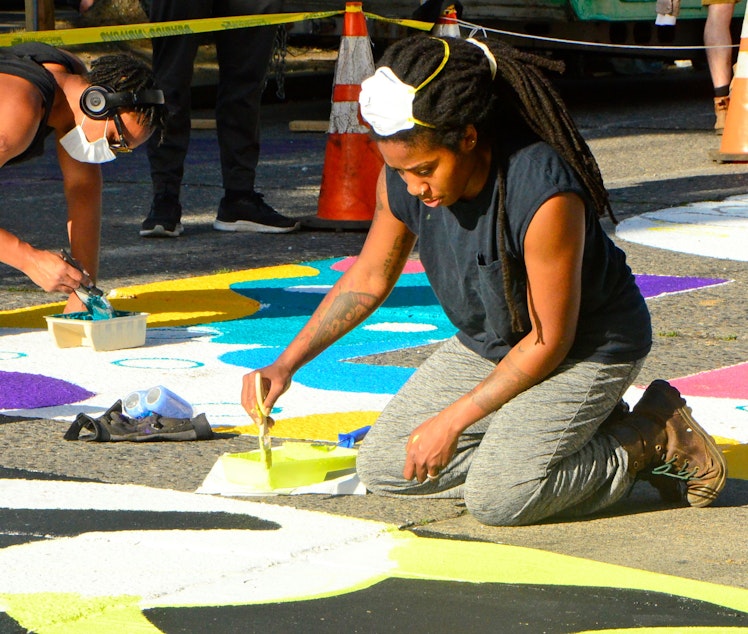Seattle's road map to inclusion in the arts

This conversation with Vivian Phillips was part of a weeklong series on systemic racism. You can find links to the other interviews in links at the bottom of this story.
Just last year, the city of Seattle in conjunction with the Seattle Arts Commission and several other groups created a roadmap to greater equity and inclusion in what they call the creative economy. In it is a list of several recurring themes.
Vivian Phillips has been working in the Seattle arts community for many years, including three years as chair of the Seattle Arts Commission. She currently sits on the Board for Culture, and she’s also a board member here at KUOW.
Phillips spoke with KUOW’s Angela King about equity in the arts.
Angela King: Among the issues you identified is that for Black artists and other people of color, there simply aren't that many opportunities to work. So how have you seen that play out here?
Vivian Phillips: You know, in the 1980s Robert Townsend did a movie called “Hollywood Shuffle.” And in that movie, he really did a commentary on the limitations of being a theater artist or wanting to be an artist. And he was typecast. The only roles that were available for him were like slaves, pimps, and that sort of thing. And he was always in a room where white people were directing him on how to be more Black. And one of the things that his grandmother said is, you know, there’s always work at the post office. So it's really about not having the opportunities in these fields that allow you to actually exercise your creative muscle in the way that everybody else gets to do that. And I think that these policies are not in employee handbooks under a tab that says “Racist Policies,” but they're in covert ways that people make decisions.
Sponsored
So how can this problem be addressed?
So you have to change the way in which decisions are made about who gets what opportunity. Those career pathways need to be intentional ways of actually shepherding people through their career. So young people get opportunities that are internships that are really not just getting coffee, but they are internships have really helped them learn a trade, people get opportunities. For instance, in theater, if you only have limited opportunities to perform on stage, that limits your ability to earn your equity card, which limits your ability to perform on equity stages. So we have to create more opportunities in general across the board for black and other people of color to actually be inside of industries.
But you look at our history and it is so rich, with artists of color from Jacob Lawrence, who lived in Seattle, Quincy Jones here, Ray Charles made a stint through Seattle.
Now, I think that history is being preserved. I think the history that's being lost is of the people who don't have those worldwide known names. There are hundreds, maybe thousands of artists who are people of color and Black artists who you will never hear about, because they don't get that kind of recognition. But they're the ones who are out here struggling. And I think part of the reason that we always hear about Quincy Jones, Ernestine Anderson, Jacob Lawrence, Gwen Lawrence, is because they were known outside of Seattle, they made it so to speak.
But who we don't hear about is Zoe Dusanne, we don't hear about the first Black woman who had an art gallery, a modern art gallery in Seattle in the '50s. We don't hear about Isabella Price, who is an incredible burlesque performer but she's struggling here in Seattle because all of her gigs have been killed because of the pandemic. But she wasn't finding the kind of opportunities that other burlesque artists were finding even before the pandemic. So some of the work that I'm trying to do right now is to put more people of color in positions for public art commission, so that we start to see Takiyah Ward’s public art, or Juan Alonso-Rodríguez, he's a public artist. Adam Jabari Jefferson, look at his work. Look at Barry Johnson's work. So those are all names that you don't know, right? But these are people who are creating the legacy.
Sponsored
Race and the justice system: 3 areas to target, according to this Seattle professor
Race matters: Understanding how the Central Area was gentrified
Race is not a health risk factor. Racism is
Seattle's road map to inclusion in the arts


